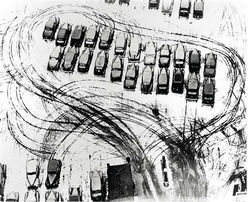FROM THAT MOMENT ONWARDS - RESEARCH
1.3 - Eugene Atget
Eugene Atget photographed a lot of settings displaying a good example of depth. He had a focus on street photography in the late 1800's to the early 1900's.
The shots on the right are a few of the many that caught my eye by Eugene Atget with regards to a good explanation of depth within photography. You can clearly see the parallel lines incline towards each other and the viewer's eye is drawn along the lines and into the distance.
I feel that Eugene Atget was a good starting point for this Exercise. I was able to understand from looking into his work further the use of depth and the creation of illusionism in photography.
Whilst looking through Eugene Atget's work I was drawn to the shots below of people going about their daily lives - street sellers, labourers etc.
This type of documentary photography is starting to interest me slowly. A look into people's lives and the world around them. Something I'm hoping I can build upon.


BIBLIOGRAPHY
Museum of Modern Art website - New York
https://www.moma.org/artists/229=undefined&page=4&direction=fwd
1.3 - Laszlo Maholy-Nagy
Referring to my course folder, Laszlo Moholy-Nagy encouraged his students to use a 'high viewpoint when taking photos to create a flat abstract quality'.
I can't quite get my head around this artists work. It feels slightly all over the place to me but I suppose that's abstract photography for you.
The four images on the left were the best I could find from his photography work that represent a flattened pictorial space.. You can see clearly that they have been taken from high up. They all differ in viewpoint height and don't seem to follow any sort of theme.
The most effective shot for me is 'Boats'. This shot follows a steady pattern in lines with contrasting colours.






